Welcome to The Experiment, the weekly newsletter where we’re making our way through the Uncertain Now. This week we’re killing darlings, people. That’s right. In reporting Forget the Alamo, I ran across the real story behind the story San Antonio loves to tell about itself. Let me rephrase: The story that I loved about San Antonio, the one Jackie Robinson called “a story that should be told around the world,” turns out to be not quite true. We can’t remember our history unless we learn what really happened.
To make up for busting a cherished myth, The Experiment offers you an embarrassment of entertainments, lead off by Sonia Van Meter’s debut as our Official Trek Correspondent with an episode recap of S3E1 of Star Trek: Discovery, “That Hope is You.” Adam Hirsch, who survived Professor Arthur Miller’s legendary civil procedure class at Harvard Law, explains why Judge Coney Barrett was able to get away with evasions he never could have attempted. Monte Williams returns with an examination of how 2020 has ruined the political thriller movie genre in “The Manchurian President,” and Jack Hughes traces the surprising parallels between 2020 and the last season of a cherished HBO show in “Same of Thrones.” And Moscow’s starting to get to Robin Whetstone in “Brokedown Palace,” the latest chapter from her Moscow memoir, Red Ticket.
And as always, we remember who we’ve lost and offer recommendations on what to do, read, watch, and listen to, including Julia Ioffe’s bonkers story about how Russians are giving our spies “immaculate concussions,” a crazy-good butternut squash and lentil stew, a made-under-quarantine television show that reminded me of talking with one of my best friends, and a new groove from Riders Against the Storm featuring Tameca Jones.
But first, did you hear how San Antonio desegregated its lunch counters?
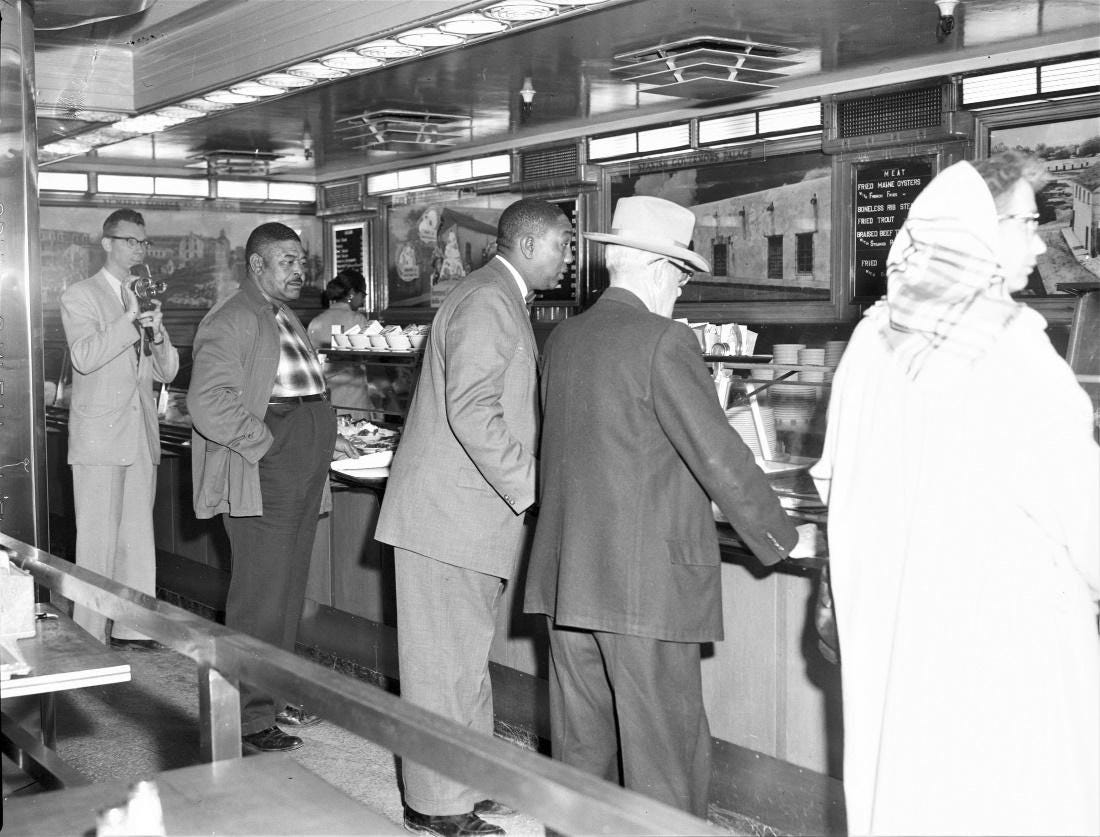
When people tell the story about San Antonio desegregating its lunch counters, they always mention the same thing. Back in the day, the bus stop at Houston and Alamo streets was a big connector of north-south and east-west routes, which meant pretty much everybody in San Antonio ended up on the corner outside the Woolworth Building where you could smell the bakery stand by the lunch counter. You talk to enough people who lived in San Antonio in the 1950s, and you hear the same thing over and over.
The potato donuts were good.
“The wonderful, positive experience with the Woolworth Building is the fact that the bakery stand was right there in front of the seats for the lunch counter,” said Nettie Hinton, a San Antonio civil rights leader. “And while they would not let me buy lunch at the counter, they would sell me those wonderful doughnuts. They were huge German puffy doughnuts, iced with sugar and things, and we could buy the doughnuts and stand there on the corner. Warm memories. Icing sugary warm memories.”
“Warm memories. Icing sugary warm memories.”
Seriously, just about everyone we talked to about this period for Forget the Alamo mentioned those donuts. Black people back then had to feel conflicted, buying donuts at a lunch counter that refused to seat them. Even though San Antonio began integrating public schools in 1955 and golf courses and swimming pools in 1956, at the dawn of the 1960s lunch counters in San Antonio were, as elsewhere in the South, whites only.
That began to change on February 1, 1960 after four North Carolina A&T students ordered coffee at a Woolworth’s lunch counter in Greensboro. That inspired Mary Lillian Andrews, then a 17-year-old college freshman and president of the San Antonio Youth Group of the NAACP, to send a letter on March 7 to all the downtown stores with lunch counters asking them to desegregate. Citing the Bible and the Constitution, she wrote that kids of all races could go to school together, ride the buses together, but not—at least at those lunch counters—eat a meal together.
The following Sunday, March 13, about 1,500 Black San Antonians held a rally with NAACP officials, after which NAACP State Youth Director Harry Burns said to expect sit-ins if San Antonio lunch counters did not integrate.
The histories of this episode give Williams all the credit, but a contemporary account noted that the Rev. C. Don Baugh, the executive director of the San Antonio Council of Churches, had already been organizing the city’s religious and business communities to integrate the lunch counters. On Tuesday, March 15, Baugh’s group negotiated with the department stores, after which five of six downtown stores publicly announced that they would open their lunch counters to non-white customers.
The following day, March 16, they began serving Black customers without violence. For a hot minute in March 1960, San Antonio was the national story. That Friday, Jackie Robinson headlined a interdenominational religious banquet in San Antonio and congratulated the city.
“San Antonians are setting examples for the whole nation,” he said. “It is a story that should be told around the world.”
“San Antonians are setting examples for the whole nation,” said Jackie Robinson. “It is a story that should be told around the world.”
Woolworth’s lunch counter was one of a few integrated that day, but because the only published photograph of the events that day were of two Black men getting lunch peacefully in line at the Woolworth’s lunch counter, that store occupies and outsized place in San Antonio’s memory. (A better-known photograph of Andrews outside Woolworth’s published in Jet magazine was taken days later.) The building, which the State of Texas bought a couple years ago, now houses Ripley's Haunted Adventure, but the sign outside still has the Woolworth’s logo, and it — the memory of what happened there as much as the 1921 building — is the story San Antonio tells about itself, namely, that they were the first city in the South to peacefully desegregate its lunch counters.
Retired journalist David McLemore came to San Antonio in 1970 courtesy of the U.S. Army and learned this story many years later while shopping at Woolworth’s.
“A clerk voluntarily told me the history, how Blacks ate lunch there roughly 10 years before I arrived in the city, avoiding the anger and heat of other places in the South. She was proud it occurred there. I walked away with my purchase feeling prouder of my new home.”
To Juany Torres, a young Chicana activist from San Antonio currently studying at the Lyndon B. Johnson School of Public Affairs, the legend of what went down at the Woolworth’s Building constitutes her progressive inheritance.
“As a San Antonio resident and community organizer, I focus on centering the lives of the most marginalized in public policy and public action. The fact that such a monumental event like the desegregation of lunch counters happened in the downtown of my hometown is awe-inspiring,” she said.
San Antonio’s civil rights hero story has so far saved the building from the wrecking ball, but recently the World Monuments Fund listed the Woolworth’s building alongside the Notre Dame Cathedral as one of the world’s most endangered historical sites. The reason for this is plain as day if you just look across the plaza at another historical site: the Alamo.
To make an extraordinarily long story as short as possible, the Woolworth’s Building stands inside the original footprint of the Alamo, and the city of San Antonio, which owns the streets outside the Alamo, and the state of Texas, which owns the Alamo and now the Woolworth’s Building, want to spend half a billion dollars restoring as much of the original footprint of the fort as possible. They also plan to build a world-class historical museum pretty exactly where the Woolworth Building stands today. In 2017, a citizens advisory committee recommended and the city council approved a plan that allowed for the possibility of demolishing the Woolworth Building.
The Woolworth’s Building has now become another way we fight about the Alamo and our history.
“Now, the city wants to tear it down as part of a $450 million redevelopment of the Alamo grounds,” said McLemore. “My hope is that an understanding of the importance of history in this city extends beyond 1836.”
Preservationists demand the building be saved. “San Antonio does not have a strong history of preserving African American and civil rights landmarks,” said Everett Fly, a San Antonio resident and architect who went to the lunch counter as a boy. “Literally thousands have been erased over the 300 years of the city.”
Texas state representative Diego Bernal, who as a member of the city council represented the Alamo and actually started this whole redevelopment process, is not unsympathetic to the preservationists’ position.
There’s just one tiny problem with the otherwise laudable effort to preserve the place where the first lunch counter in the South was integrated. None of that is true.
“I've learned the hard way that if you don't have a physical space that represents something you pretty much lose it,” he said. “I do think that we run the risk of washing away that part of history without a place to go see it. And I don't like that in the midst of the conversation we're having that we can't find a way to make these two things coexist in a very real way.”
Here, then, is what the San Antonio Conservation Society says about the building’s importance in the civil rights movement:
The Woolworth Building has significant historic and cultural importance in the history of the United States and the United States as the site of the only voluntary desegregation of a lunch counter in the South on March 16, 1990.
And here we find that the proof is a photograph.
Of the seven San Antonio stores that integrated in 1960, Woolworth’s is the oldest and most prominently located. It provided the backdrop for the only published photograph showing the March 16th integration of San Antonio’s lunch counters. This photo appeared in the San Antonio News.
And here is what the San Antonio Conservation Society claimed on its application to have the building declared a State Antiquities Landmark:
The San Antonio Express-News photographed history in the making at the Woolworth’s cafeteria, where the store’s equal service policy also helped San Antonio acquire the distinction of being “the first city in the South to receive publicity for the desegregation of its lunch counters.”
There’s just one tiny problem with the otherwise laudable effort to preserve the place where the first lunch counter in the South was peacefully integrated. None of that is true.
Here’s the photograph that ran in the San Antonio News the next morning. The caption didn’t specify which lunch counter it was, but in the archives of the University of Texas at San Antonio it was labeled as being taken at the Woolworth’s lunch counter.
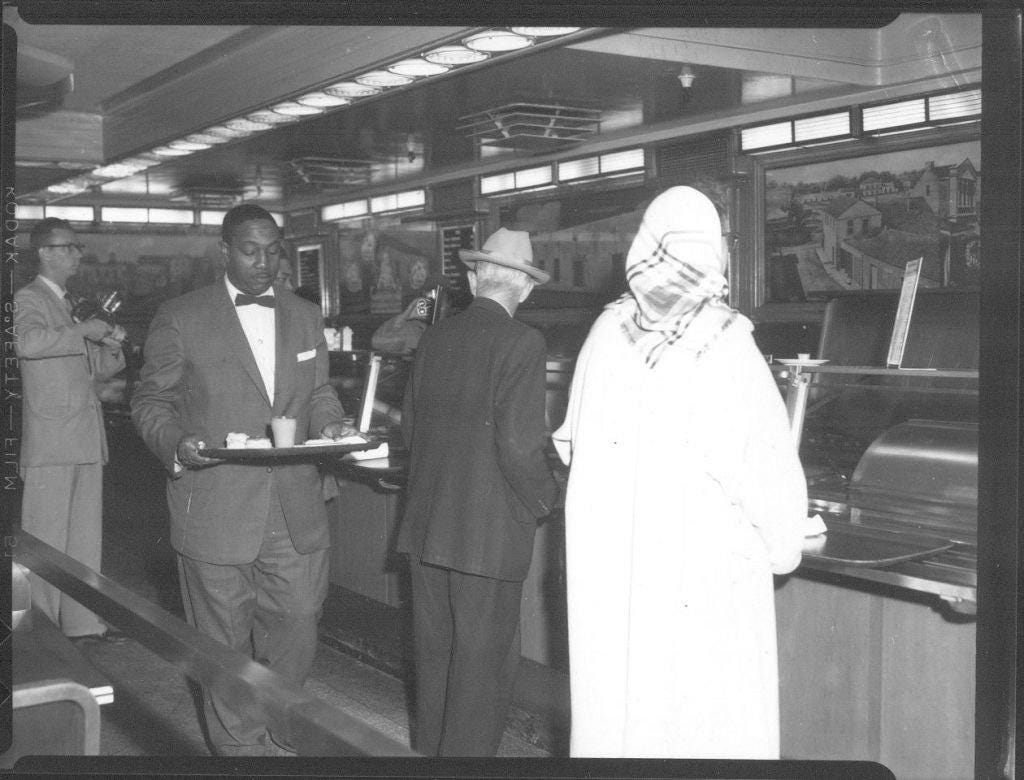
This is what the Woolworth’s lunch counter looked like:
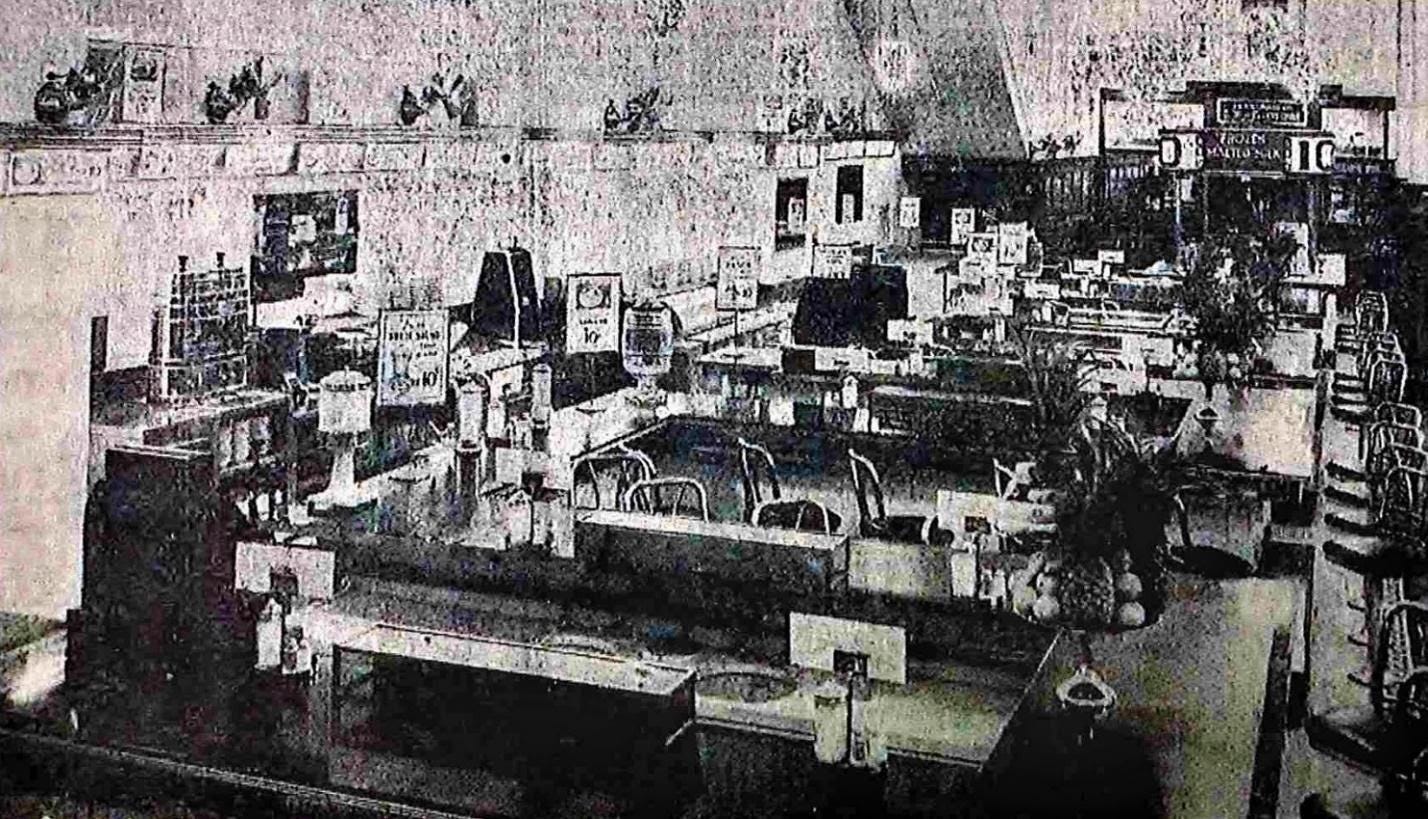
This was Kress’ lunch counter, which is obviously where the picture was taken:
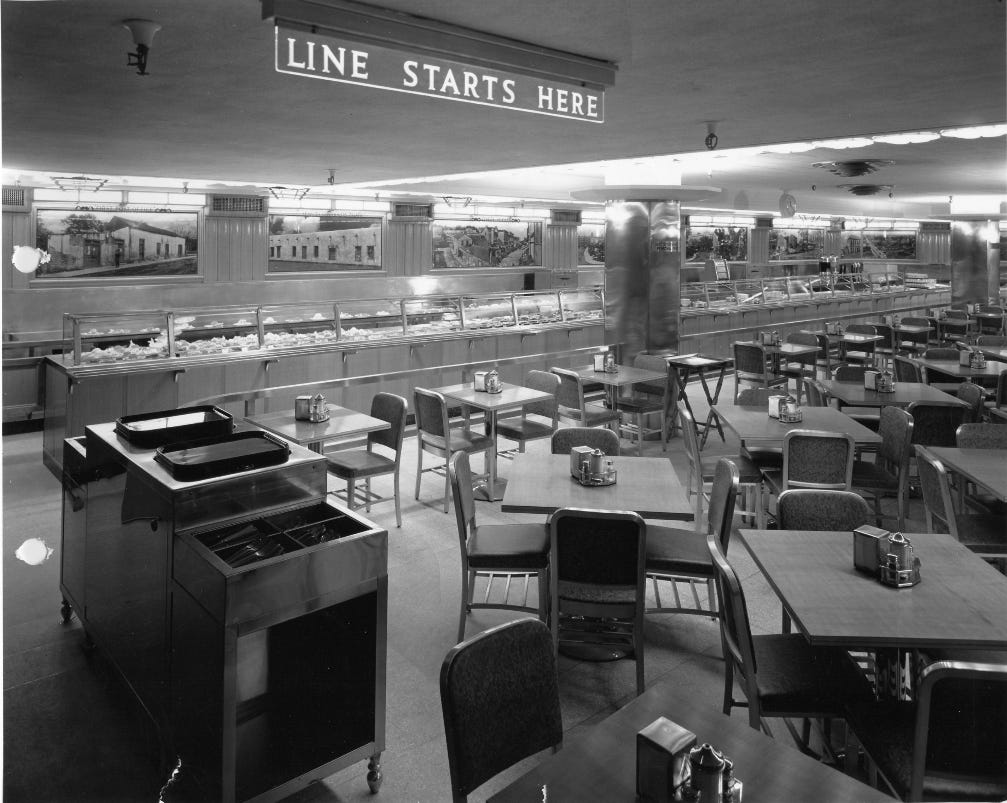
Historical myths aren’t Jenga, able to withstand the removal of a few building blocks. Myths are illusions that depend on us not seeing things clearly. Once you start focusing on what really happens, the illusion falls apart so quickly.
Much of the preservationists’ claim rests on the picture in the newspaper being the only one from that day. It might have been the only one in a San Antonio paper, but that and other photographs went out on the AP wire and were published all over the country.
Historical myths aren’t Jenga, able to withstand the removal of a few building blocks.
But San Antonio was the only city to integrate its lunch counters peacefully.
People interpret the claim that San Antonio was able to peacefully desegregate its lunch counters as either taking place without protests and demonstrations or without reactionary violence. I tend to count peaceful protests as peaceful and violence as violent, but not everyone sees the world as I do. However you see the world, I’m going to have to ruin this one, too. Joske’s was the hold out, refusing to integrate its lunch counters with the others, and had to deal with sit-ins. To which I say, I wish Joske’s had stayed in business longer just so I could watch Amazon drive it into bankruptcy. In any case, there were protests.
But the truth is that the claim of nonviolent integration rests entirely on selective memory that puts the entire burden of non violence upon Black people. White violence didn’t count. On Wednesday, March 15 — the day before the department stores began serving Black customers — a burning cross was found in a downtown park. Police Chief George Bichsel “labeled the burning ... as the work of cranks.” To me, an act of terrorism on the night before the lunch counters began serving Black people is hardly peaceful.
OK, alright, San Antonio was the first to integrate its lunch counters in the South, right?
Sorry. The first lunch counter to desegregate in the South was at the Brown-Rogers-Dixson hardware store in Winston-Salem, North Carolina, on March 7, before things went down in San Antonio, but let’s not start throwing any parades for the hardware store. The owner, thinking himself clever, simply removed all the stools at the lunch counter, sparing himself both the inconvenience of a sit-in and the horror of having white people eat their damn lunch next to Black people. The Conservation Society also admits that Oklahoma City had done so already, though not peacefully, and Oklahoma doesn’t really count anyway.
But this was the first in Texas, right?
Actually, the first lunch counter in Texas to desegregate was H-E-B in Corpus in 1952. I know, right? H-E-B has been quietly awesome since the Truman administration.
H-E-B has been quietly awesome since the Truman administration.
OK, OK, but this was the first Woolworth’s in Texas to…
Nope. The first Woolworth’s lunch counter in Texas to desegregate was also in Corpus, in 1958. Corpus is, by the way, one of the top five coolest cities in Texas.
Fine. At least Woolworth’s and the others were the first in San Antoni…. Oh come on!
Woolworth’s wasn't even the first lunch counter in San Antonio to desegregate. That was Sears, sometime in the 1950s. Someone complained to headquarters in Chicago, which had its own racism problems, but lunch counters weren’t one. Sears didn’t brag about desegregating in San Antonio to prevent white backlash, but desegregate they did in fact do.
Well, at least we can saw that the Woolworth’s desegregated its lunch counter right alongside all the… Really?
The Woolworth’s wasn't even the first lunch counter to desegregate on March 16, 1960. That was, according to a remarkably preserved TV news script, Kress' Department Store.
Is the story San Antonio tells itself about Woolworth’s close enough to the truth to count?
None of this lessens the contribution that Lillian Andrews and the Rev. C. Don Baugh made to the civil rights movement, not to mention the business and religious community that didn’t wait for popular consensus before desegregating lunch counters. And it probably didn’t matter to those Black men in those photographs if they had lunch at Kress or Woolworth’s. They probably just wanted to be treated like free men.
I’m not sure it matters to the cause of civil rights whether Woolworth’s was the first or the place where a photograph was taken. Rosa Parks was not the first Black lady to get arrested in Montgomery for not sitting in the back of the bus, but her arrest started the bus boycott, and the fact that San Antonio’s lunch-counter desegregation occurred without sit-ins during such a tumultuous time was not insignificant.
The problem is how we treat the story. Paul Revere was not the only rider “on the eighteenth of April, in Seventy-Five,” and he never cried out, “the British are coming.” There were three other dudes and a lady named Sybil Ludington, all of whom but Revere escaped capture by the British. But Revere was the one Longfellow made famous, and we ended up with a cool story about our history that has a lot of things in common with the truth.
Is the story San Antonio tells itself about Woolworth’s close enough to the truth to count? Where this crosses over from a heroic myth on par with the ride of Paul Revere into an impediment to progress is treating the facade of a building like a historic relic. Turning your history into a hagiography doesn’t make you a saint, and it sure doesn’t turn the building currently housing Ripley's Haunted Adventure into a shrine.
You can’t remember your history if you’re telling yourself a myth you inherited without knowing the truth. But those donuts, though. Those donuts were real. Sometimes “sugary warm memories” are the truth, and sometimes they’re just a story we tell ourselves to make us feel better.
S3 E1: That Hope is You
by Sonia Van Meter
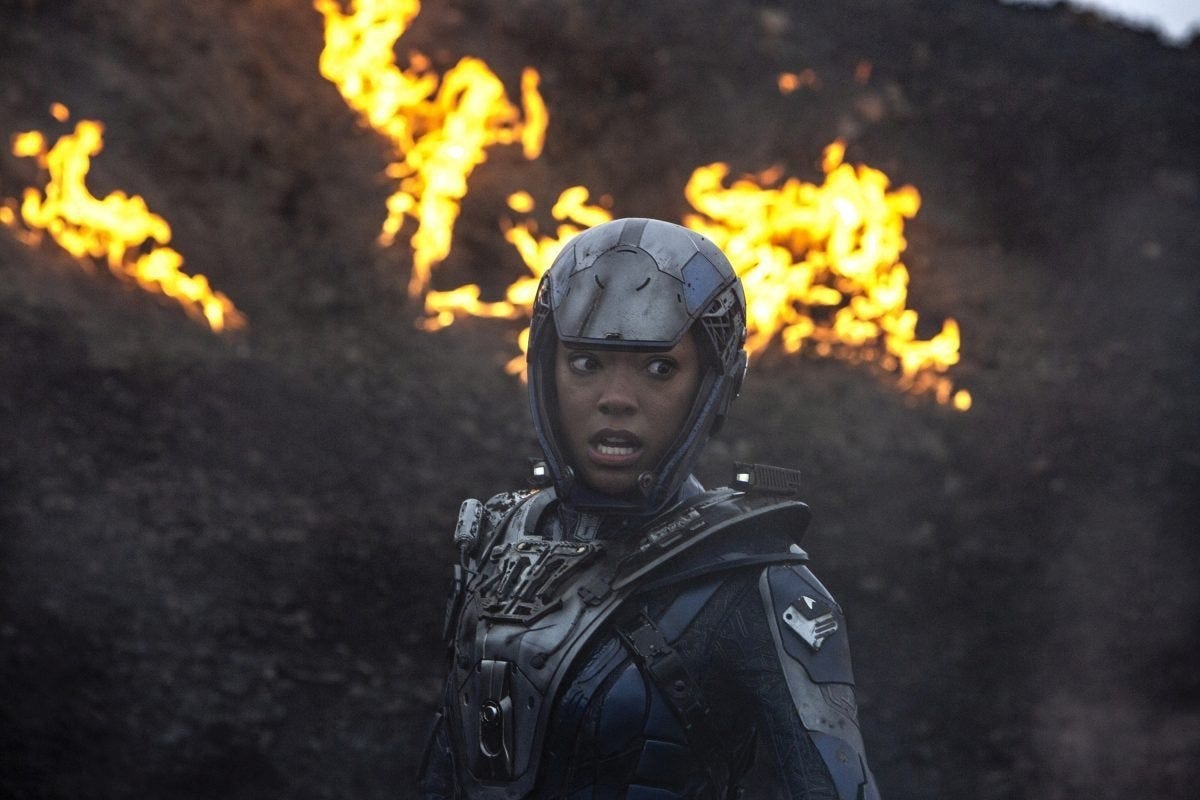
My wife Sonia Van Meter, whom I’ve written about previously for The Experiment, is many things. But to know Sonia at all is to know of her deep faith in the Star Trek universe. We’ve been watching CBS All Access’ Star Trek: Discovery. For the third season, Sonia has graciously agreed to provide episode recaps.
A Star Trek series in which the Federation has failed is the next logical place for the franchise to go.
Prof. Miller’s Civil Procedure
by Adam Hirsch

Judge Coney Barrett’s performance in front of the Senate Judiciary Committee would never have flown in Harvard Law Professor Arthur Miller’s first-year Civil Procedure class, the one you know from Scott Turow’s One L. My old friend Adam Hirsch took that class and explains why she got away with it.
Where does the power lie in a Supreme Court hearing? The Senators do their damndest to make it look like they have it.
The Manchurian President
by Monte Williams

Monte Williams, our mad scientist, is back with a look at how 2020 has pummeled the political thriller genre — with one notable, and chilling, exception: The Manchurian Candidate.
“One final slap in the face to the genre of political thrillers: typically the plot machinations occur in the shadows, the characters all take great pains to hide the monstrous actions of the coup-plotters (a wistful if historic term.) In 2020, it all seems like it’s happening in front of us. No one’s hiding anything--except taxes, grade points, DNA, BMI, etc.”
Same of Thrones
by Jack Hughes
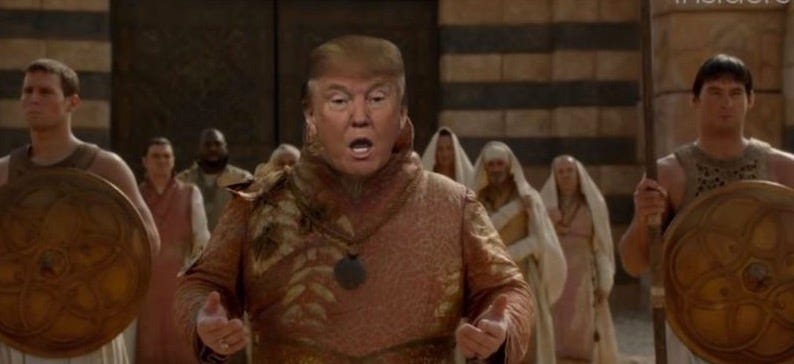
Jack Hughes is back to draw another pop culture parallel, this time between two characters with the initials D.T.
There were some early warning signs, the odd flash of fiery temper and her reaction to disloyalty from officials was often draconian (even dragonian). Yet it’s in the last season that ‘DT’ really flew off the handle. Even close advisors and supporters were left shaken and shocked by increasingly hazardous or unhinged actions.
Red Ticket: Brokedown Palace
by Robin Whetstone
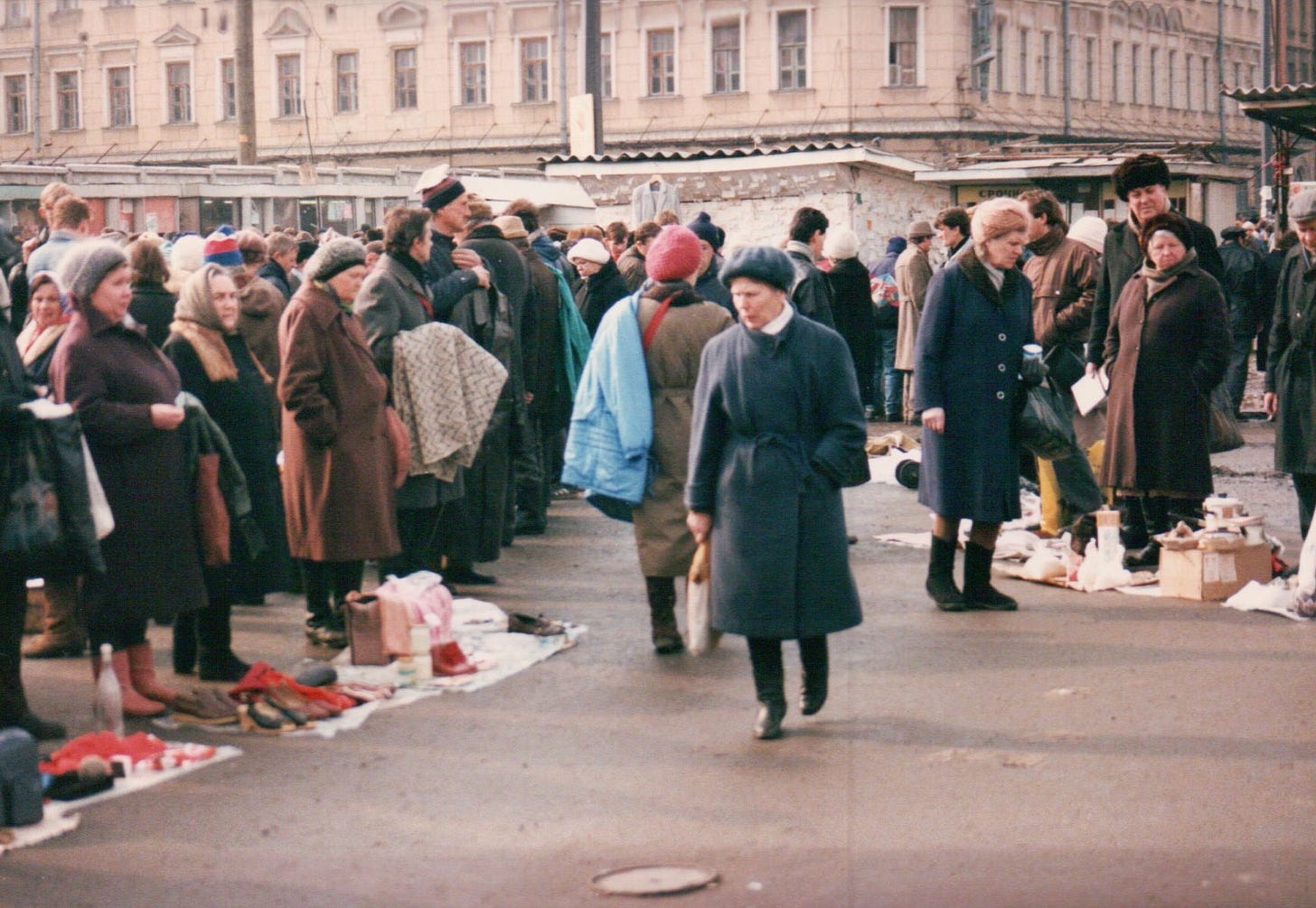
This weekend in Red Ticket, the ambient misery starts to get to Robin.
“It felt like something bad was coming, all the time.”
RIP
Fred Dean, man. Fred freaking Dean.
This carnival pastor
This judge who survived the Oklahoma City bombing
How we’re getting through it
Dancing it out
Buying shares of hit songs
Making spiced egg in a hole
Keeping a commonplace book
Not feeling bad about feeling bad
Not seeing kids sit on Santa’s lap this year
Making roasted butternut squash with lentils and feta
Painting our rooms the same colors during the pandemic, apparently
What I’m reading
Brian Beutler: “What to Do About GOP Bad Faith After Trump”
Sarah Ellison: “How the 1619 Project took over 2020”
Gary Hamel: “The Core Incompetencies of the Corporation”
Monica Hesse: “Donald Trump keeps begging women to like him. They keep saying no.”
Julia Ioffe: “The Mystery of the Immaculate Concussion”
Paul Kane: “Endangered Senate Republicans can’t win without Trump. Can they win with him?”
Mark Manson: “The Law of Unintended Consequences”
And this is where the story gets weird. Because, amazingly, studies have since determined that the closing of the nuclear power plants in Japan has actually caused more deaths than the Fukushima accident itself.
Stuart Stevens: “A Message to Democrats from Your New Ally”
So to my Democratic friends: Let us go forward in this final stretch with the confidence that our mission is vital and our opponent is weak.
Do not hesitate to swagger. These last two weeks belong to you. Years from now you will look back on these last days as some of the best in your lives. An evil was unleashed in the country you love and you rose to smite it. You will slay this dragon.
Trump is collapsing and his allies of convenience are panicked.
Now is when you turn a victory into a rout. We are all tired, but the other side isn’t just tired. They are frightened and confused. As they should be. Because they are losing the fight for the soul of this country. And they know it.
Victory is near.
Chris Tomlinson: “Forget the Alamo’s myths, do not risk San Antonio’s reputation”
Matt Viser: “Inside the ‘Malarkey Factory,’ Biden’s online war room”
WaPo: “Stop wiping down groceries and focus on bigger risks, say experts on coronavirus transmission”
What I’m watching
I am a ginormous nerd about media produced during this pandemic. Limitations create friction that can wear you down or light a spark. For David Tennant and Michael Sheen, it was all the sparks in BBC’s Staged, which you can see on Hulu. You may appreciate, if not enjoy, the accurate portrayal of confinement and darkness in some of the asides with their partners. The unlubricated grinding to get through the day provides the world building, but the motor of this little beauty is the restaurant quality banter between the two leads.
I texted a friend as I was falling in love with Staged. “This reminds me of us,” I wrote.
“Then I must see it,” he replied.
So must you.
What I’m listening to
OK, for real, whichever one of you forgot to tell me about “I’m Losing Myself” from the Brazilian Girls and David Byrne is fired.
The Gorrilaz’s concept album, Song Machine Season One: Strange Timez, has an experimental art rock mix tape vibe. Check out “Strange Timez ft. Robert Smith” to see if it’s your thing.
In which Jeff Tweedy argues the easily disprovable: “Love is the King.”
Nipsey Hussle’s “Perfect Timing” has a winning, yearning earnestness to it.
Kids, do you like that old-timey music? Then you’ll love “I Wonder Why” from Kacy & Clayton & Marlon Williams off their upcoming album, Plastic Bouquet.
Good Sad Happy Bad is out with a new album, Shades.
Lots of local political music out, including Akina Adderley “Broke,” Folk Uke’s “Small One,” and Walker Lukens’ “We See You.”
All of that is an overabundance of musical blessings, but our featured song this week comes from Black Austin artists who refuse to be pigeonholed: Riders Against the Storm and Tameca Jones. Every time “Red Lights” comes on it grabs my attention. This sucker’s a groove.
What do you think of today's email? I'd love to hear your thoughts, questions and feedback. I might even put ‘em in the newsletter if I don’t steal it outright.
Enjoying this newsletter? Forward to a friend! They can sign up here. Unless of course you were forwarded this email, in which case you should…
A new poll shows that Biden and Trump are tied in Texas. Texas is a swing state. Let’s act like it.
Thanks to Noom I am down to my college weight, and haven’t had to cut out any foods. I hit my goal weight before Memorial Day and have stayed within a few pounds either way ever since. This is easy. Noom is an app that uses psychology, calorie counting, and measuring activity to change your behavior and the way you think about food. I’m stronger and healthier than I’ve been in years. Click on the blue box to get 20% off. Seriously, this works.
Headspace is a meditation app. I’ve used it for a couple years and am absolutely shocked at how much it’s taught me about managing my inner life. Try it free for a couple weeks. Don’t worry if you’ve never done it before. They talk you through it.
I now offer personal career coaching sessions through Need Hop.
If this newsletter is of some value to you, consider donating. Honestly, I’m not doing this for the money. I’m writing this newsletter for myself, and for you. And a lot of you are contributing with letters and by suggesting articles for me to post. But some of you have asked for a way to donate money, so I’m posting my Venmo and PayPal information here. I promise to waste every cent you give me on having fun, because writing this newsletter for you is some of the most fun I’ve had. Venmo me at @Jason-Stanford-1, or use this PayPal link.



